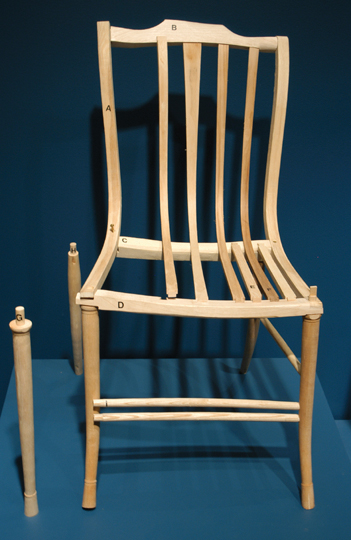
Elastic Chair in progress
Oak, hickory, ash
Winterthur, An American Country Estate
The chair design that Gragg patented, seen on the right, features separate turned legs attached to the seat and carved “goat-hoof” feet. He also made fully elastic versions as seen on the left. A single piece of wood forms the back of the chair, the side seat rail, and the front leg—an ingenious design that was attractive to the eye and provided maximum elasticity.
A quick guide to making the Patented Elastic Chair:
Once all individual pieces are cut or bent to shape, there are three main construction steps:
1. The primary frame is assembled out of two bent side pieces (a),
the crest rail (b), back seat rail (c), and front seat rail (d).
2. Each bent wood member of the back and seat (e and f) is fitted and joined individually. The overall compound curve of the back and seat cause all the joints, straight or dovetail, to vary in angle and shape.
3. Finally, the front (g) and back legs (h) are joined with round mortise-and-tenon joints, and the stretchers (i) are fitted between the legs.
Once the parts are all together, the interfaces and dovetail joints of the seat and back are blended with scrapers and files into a smooth, continuous surface and the chair is ready to be painted.